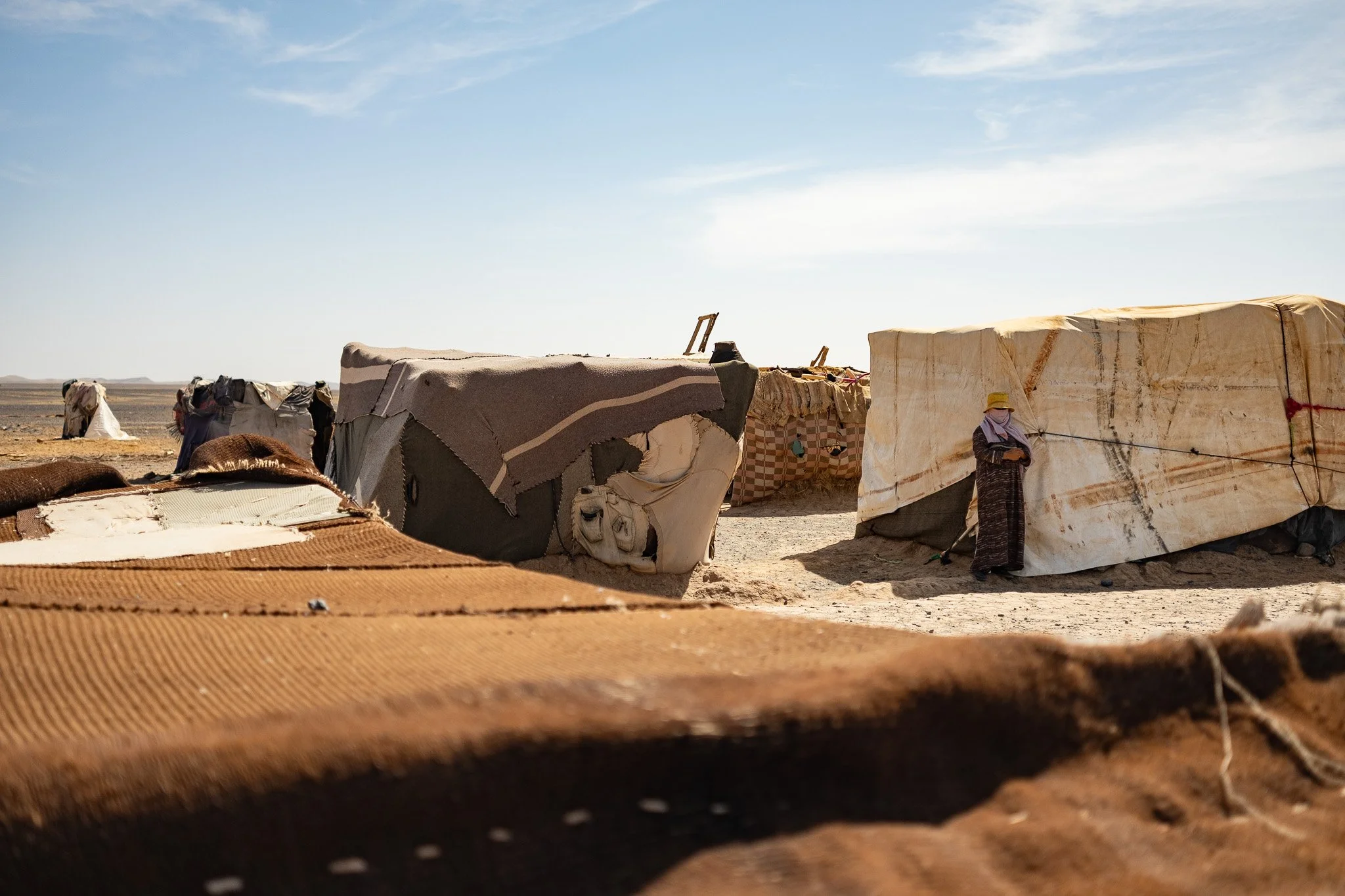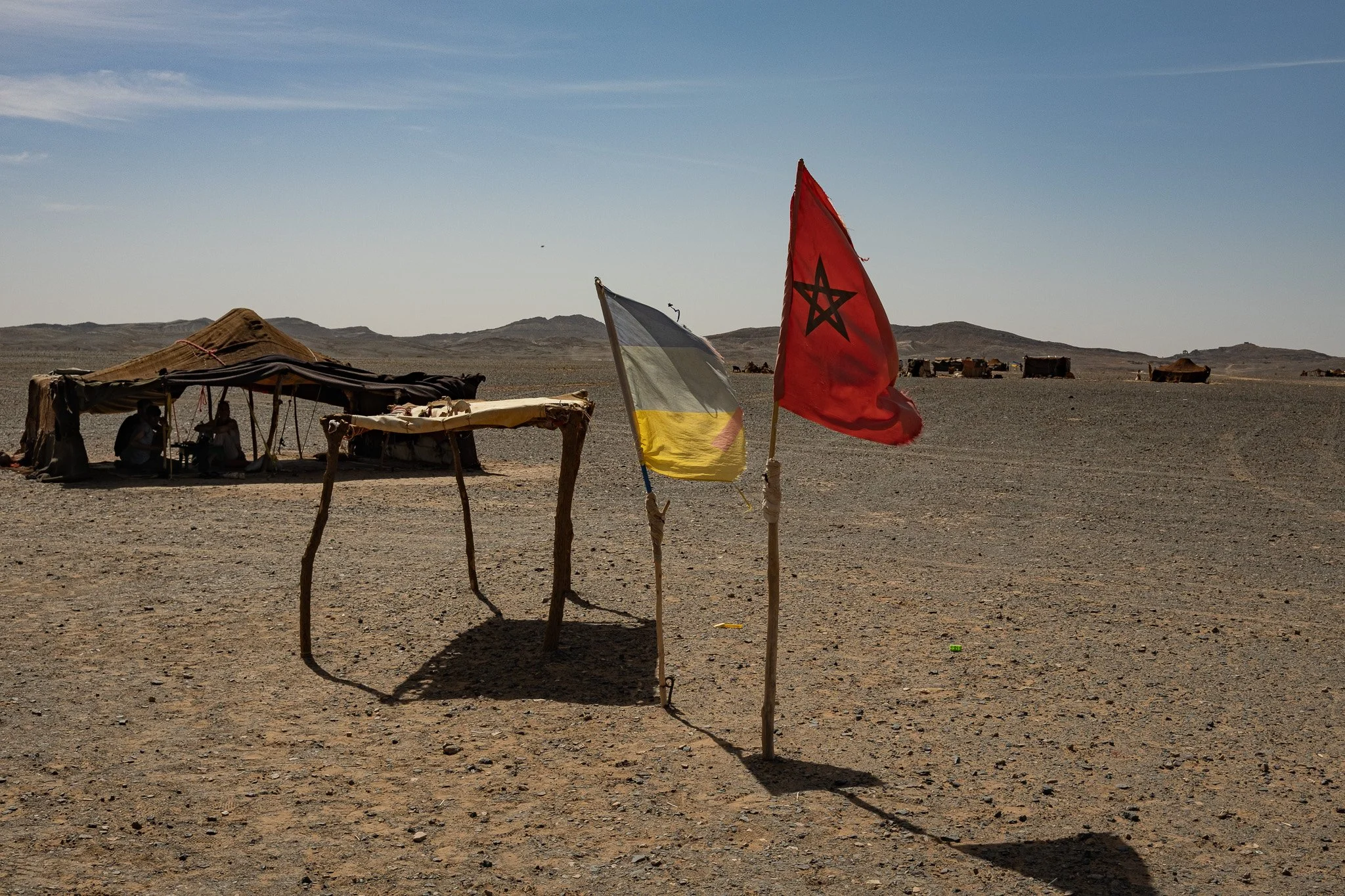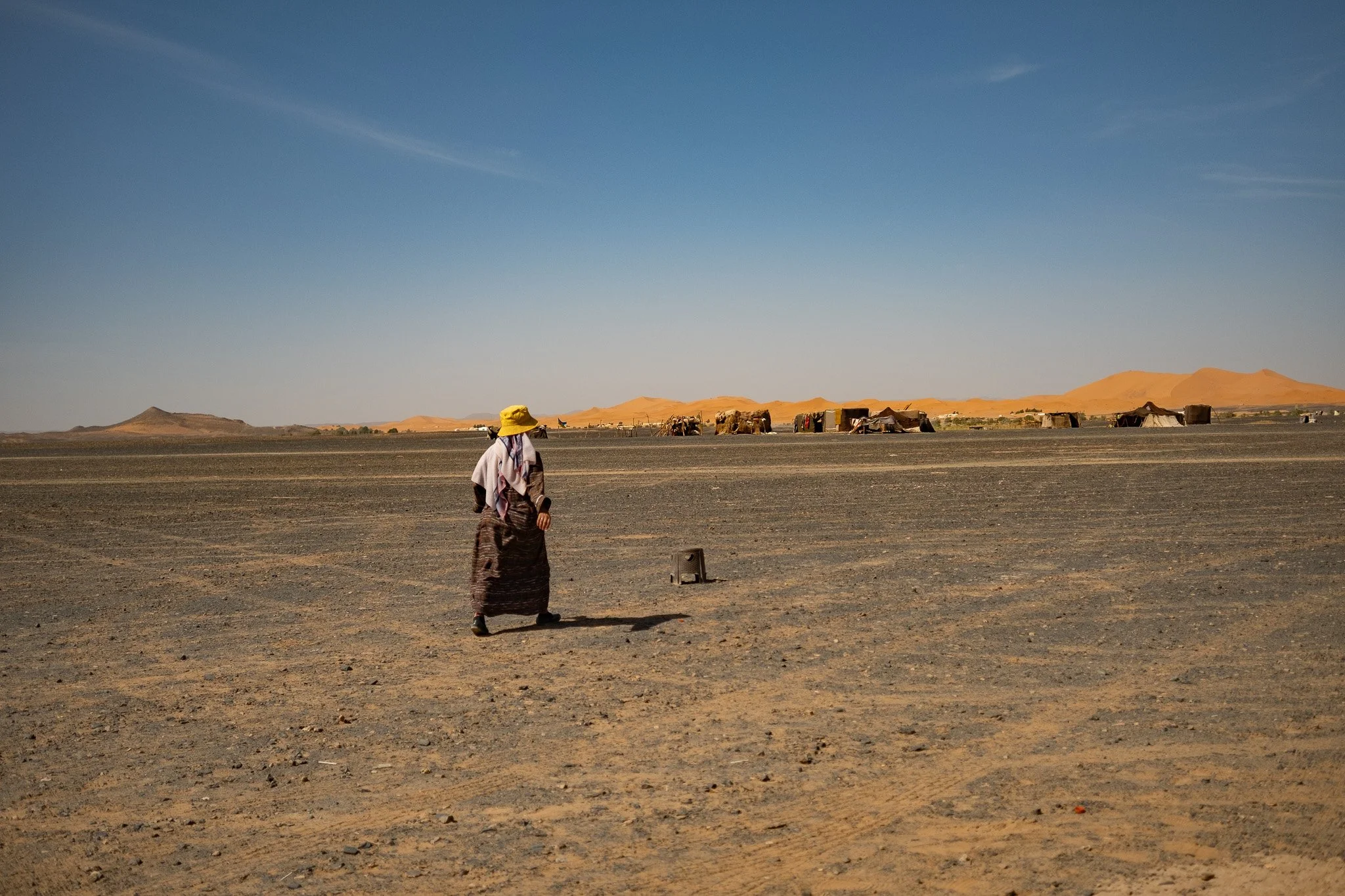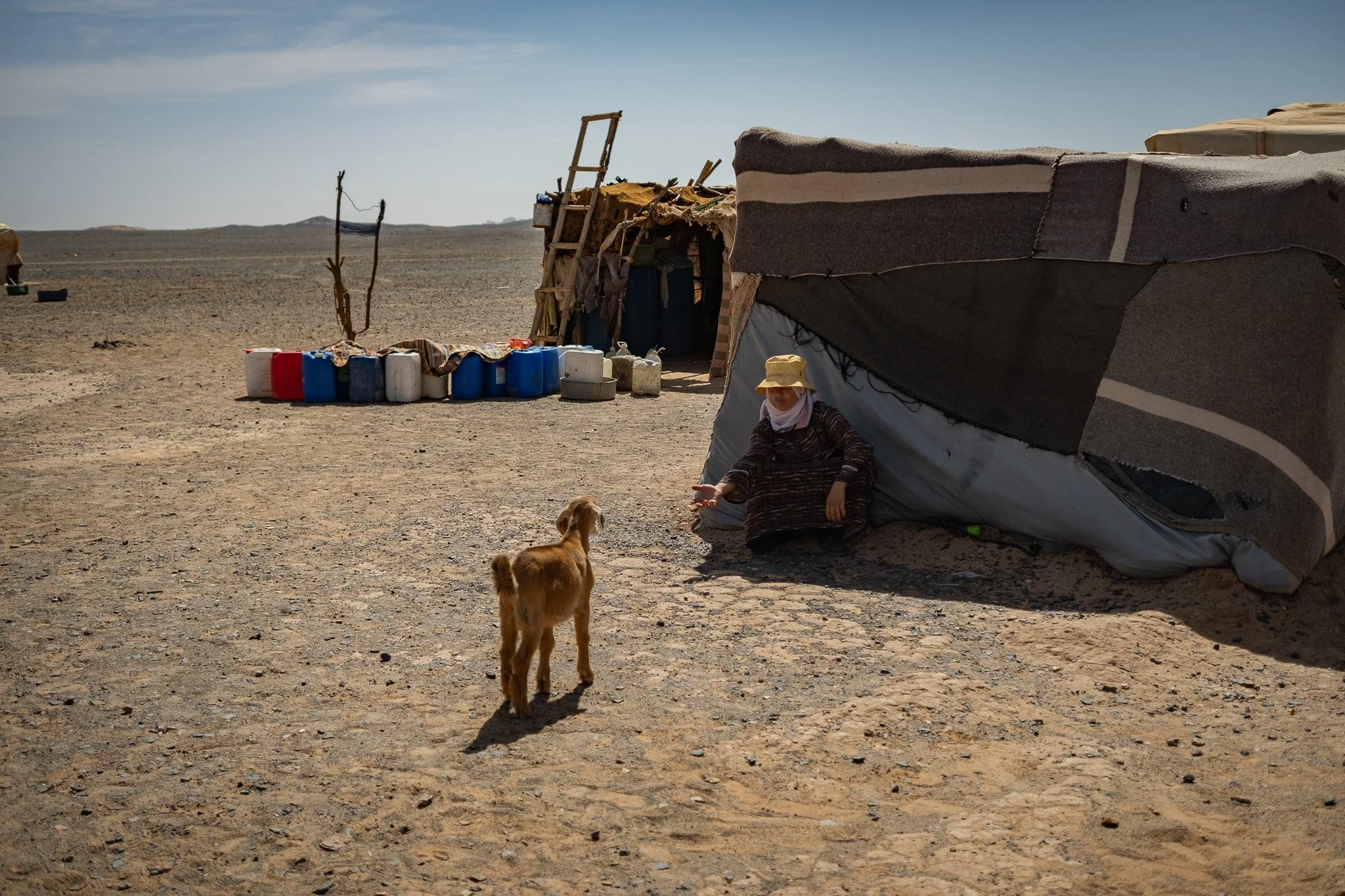Nomads of the Sahara
When we arrived in Et-Taous, a small settlement near Merzouga in Morocco, I was immediately struck by the vastness of the Sahara. Golden dunes stretched endlessly into the horizon, and the silence of the desert felt both intimidating and peaceful. It was here, among the sands, that I had the unique opportunity to visit a family of Amazigh nomads, experiencing their daily life up close.
Life Within a Family
We visited a family that had two young girls, whose laughter and energy filled the desert home. The family’s living space was divided into small, purposeful houses. One served as the kitchen, where women baked bread in clay ovens and prepared meals over open flames. Another was the bedroom, a cozy shelter from the cold desert nights and strong winds. A larger house acted as the common area, where family members gathered to share stories, tea, and daily experiences.
Staying with them allowed me to see the structure and rhythm of nomadic life. Despite the simplicity, everything had a place and a purpose. Beds were tucked neatly with blankets, cooking spaces were organized with tools, and every drop of water was carefully rationed. Children moved freely between spaces, playing and learning, while adults went about their tasks with a quiet efficiency born from years of survival in the desert.
The Amazigh People: “Free People”
The nomads in Et-Taous are part of the Amazigh community, traditionally called “Berbers” in Western literature. The term “Berber” comes from the Latin barbarus, meaning “foreign” or “stranger,” and was historically used by outsiders to describe people whose language and culture were unfamiliar.
The people themselves prefer Amazigh (plural Imazighen), which translates to “free people.” This name reflects their pride, independence, and deep connection to the land. They are the indigenous people of North Africa, with a rich culture, distinct languages, and traditions that have endured for thousands of years despite colonization and modern pressures. Their resilience is woven into every aspect of daily life in Et-Taous.
A Life in Motion
Nomadic life is defined by movement and adaptability. Families relocate according to seasonal changes, access to water, and grazing needs for their animals. Water is scarce, and every drop is valued. Grain is cultivated in oases where irrigation is possible, and bread is baked with care in communal clay ovens. When resources are limited, trading with nearby villages provides essential goods.
Moments of Joy and Connection
One of the most memorable moments was when a woman in our group brought coloring books and pencils for the children. The young girls’ faces lit up instantly, and they eagerly began coloring and playing, their laughter echoing across the desert. These small gifts created a bridge between our worlds, and it was beautiful to see how something as simple as paper and crayons could bring such delight.
We were also offered warm bread fresh from the clay oven and shared tea in the larger house. Sitting together, eating and drinking, I felt a profound sense of connection. These were moments of hospitality, trust, and shared humanity – reminders that generosity and warmth transcend language and culture.
Why They Live This Way
The nomadic lifestyle is shaped by history, environment, and culture.
Environmental factors: The Sahara is a harsh, arid environment. Water is scarce, and the desert’s resources cannot support large, permanent settlements. Moving from place to place allows families to find water, grazing for animals, and areas to grow essential crops.
Cultural traditions: Nomadism is part of Amazigh identity. Their ancestors have lived as nomads for thousands of years, and moving with the seasons is a practice passed down through generations. This lifestyle preserves knowledge of the land, survival skills, and social structures that strengthen community bonds.
Economic reasons: Some families may have opportunities to settle in towns, but the nomadic life still provides autonomy, access to grazing lands, and freedom from the constraints of urban life. Others may live this way because resources are limited, and the desert offers the most viable way to sustain their animals and crops.
Spiritual and social aspects: Life on the move fosters resilience, adaptability, and interdependence. Each family member contributes to survival, creating strong social ties. Freedom, mobility, and living close to nature are deeply valued principles among the Amazigh.
Sounds, Sights, and Sensations of the Desert
Living in Et-Taous is a sensory experience. The wind shapes the dunes daily, shifting the landscape almost imperceptibly. In the mornings, sunlight glows softly over the sand, and at night, the desert sky is filled with stars that feel impossibly close. The smell of baking bread mixes with the scent of desert herbs and earth. The distant bleating of goats or the low rumble of camels moving through sand reminds you that life here is quiet but alive, measured by the rhythm of nature rather than clocks.
Reflection
The Amazigh nomads taught me that freedom is not about possessions but about connection – to land, family, and community. Their life is simple, yet profoundly rich. Visiting them was more than a journey across the Sahara – it was a journey into the heart of a people who call themselves “free.”






















